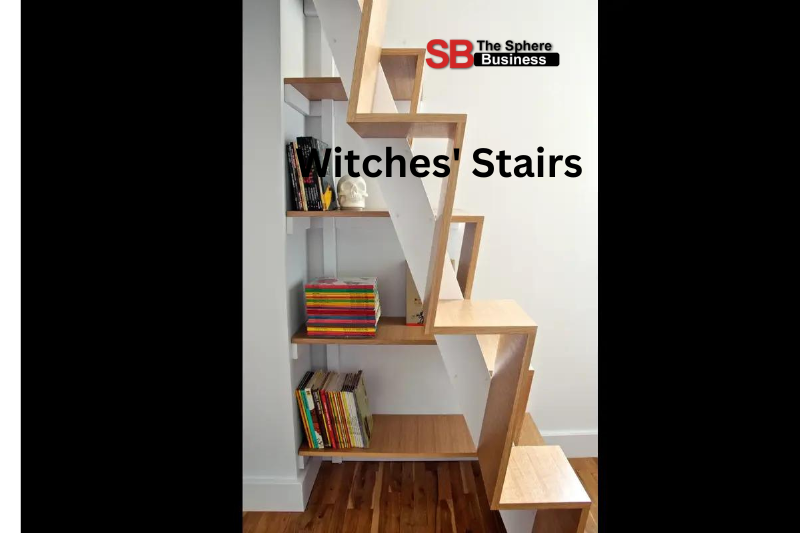The Mystery and Folklore of Witches’ Stairs

Introduction
Throughout history, staircases have been more than just architectural elements; they’ve been woven into cultural myths, superstitions, and folklore. One of the most intriguing examples is the concept of “witches’ stairs.” Found predominantly in parts of the United States, witches’ stairs have fascinated people with their unique structure and the eerie stories that surround them. This article explores the history, design, and folklore behind witches’ stairs, as well as their significance in modern culture.
1. What Are Witches’ Stairs?
Witches’ stairs, also known as “spiral stairs” or “staggered stairs,” are an architectural oddity characterized by an unusual step pattern. Unlike traditional staircases, where steps rise evenly in succession, witches’ stairs often alternate or feature oddly spaced steps. Sometimes, these stairs appear steep and narrow, making climbing them a challenge.
The most distinct feature of witches’ stairs is their irregular design, which gives them an unsettling appearance. In homes, these staircases are typically found tucked away in attics or basements, adding to their mysterious nature.
2. The Folklore Surrounding Witches’ Stairs
The folklore behind witches’ stairs is just as peculiar as their design. According to legend, witches are unable to climb these stairs because they must always ascend in a straight line. The staggered or spiral pattern supposedly confuses them, preventing them from reaching the top. This belief, rooted in superstitions from centuries past, gave rise to the name “witches’ stairs.”
In older times, people believed that building these stairs in their homes would protect them from witches or evil spirits. The concept of witches being unable to climb certain types of stairs is not exclusive to one culture. Similar beliefs can be found in various traditions across Europe, where different forms of protection against supernatural entities were common.
3. The Historical Origins of Witches’ Stairs
While the folklore surrounding witches’ stairs is fascinating, their true origins are likely more practical than mystical. In many older homes, particularly in New England, space was often at a premium. Architects and builders had to get creative with their designs to maximize available square footage. One solution was the witches’ stairs, which allowed homeowners to fit a staircase into tight spaces where a traditional design wouldn’t work.
These staggered stairs became popular in regions where homes were built close together, and space was at a premium. However, the eerie design, combined with the already prevalent superstitions of the time, led to the development of the folklore surrounding them.
4. Witches’ Stairs in Modern Architecture
Despite their historical roots, It continue to be used in modern architecture, albeit less frequently. Today, they are often seen as quirky design elements in homes that value unique, unconventional layouts. Some designers incorporate as a nod to historical architecture or as a way to save space in compact living environments.
In modern homes, the use of may be purely for aesthetic or practical reasons, but the lingering folklore adds a layer of intrigue to their presence. The very idea that these stairs could repel witches or evil spirits makes them an attractive feature for those drawn to mysticism or historical traditions.
5. The Symbolism and Superstition of Witches’ Stairs
The witches’ stairs are deeply entwined with symbolism and superstition. In addition to the belief that witches cannot climb them, they also represent a barrier between the physical and spiritual worlds. In some cultures, stairs are seen as transitional spaces — a bridge between different levels of existence. Witches’ stairs, with their irregular pattern, might symbolize the disruption of that connection, thus preventing harmful entities from crossing over.
Moreover, the odd number of steps in witches’ stairs has long been associated with superstition. In various cultures, odd numbers are thought to be unlucky or disruptive. This could have contributed to the belief that the irregular steps of could protect a home from negative forces.
6. Cultural Depictions of Witches’ Stairs
The concept of witches’ stairs has also appeared in various forms of literature and media. From horror novels to folklore-themed television shows, the unsettling nature of these stairs has made them a popular trope in stories about haunted houses, witchcraft, and the supernatural. Their unique appearance often evokes a sense of unease, making them the perfect architectural feature for settings that need to feel eerie or haunted.
In popular culture, It are often associated with hidden rooms or attics, further enhancing their connection to mystery and the unknown. The idea that these stairs might lead to something secret or dangerous has captured the imaginations of writers and storytellers for generations.
7. Witches’ Stairs: Fact vs. Fiction
While the legends surrounding are intriguing, it’s important to separate fact from fiction. There is no evidence to suggest that witches (or any other supernatural beings) are actually incapable of climbing these stairs. The folklore is purely symbolic, rooted in historical beliefs about witches and spirits.
From a practical standpoint, witches’ stairs were likely designed to save space in small homes or buildings. Their unusual design has no magical properties, though their appearance can certainly inspire a sense of wonder or unease in those who encounter them.
8. How to Incorporate Witches’ Stairs in Home Design
For those interested in incorporating witches’ stairs into their home design, there are a few factors to consider. First and foremost, the space available will dictate whether or not are a practical choice. Due to their steep and narrow design, these stairs are best suited for areas where traditional staircases are not feasible, such as lofts or attics.
Additionally, homeowners should be aware that witches’ stairs can be more difficult to navigate than regular stairs, especially for children or elderly individuals. However, for those who appreciate unique architectural features and are drawn to the folklore behind witches’ stairs, they can be a fascinating and visually striking addition to any home.

Conclusion
The mystery and allure of witches’ stairs stem from their unusual design and the rich folklore that surrounds them. While they may have been born out of practical architectural needs, their connection to superstition and witchcraft has turned them into a symbol of protection and intrigue. Whether used in historical homes or modern spaces, It continue to captivate people with their unique structure and the legends they carry.
Though the belief that witches cannot climb these stairs may be nothing more than a superstition, it is a testament to how deeply intertwined architecture and folklore can be. The presence of in homes serves as a reminder of the enduring power of myth and the ways in which it shapes our understanding of the world around us.

